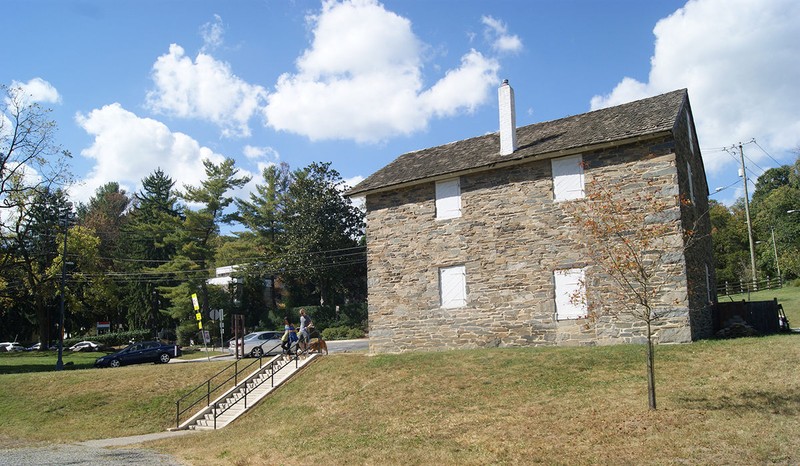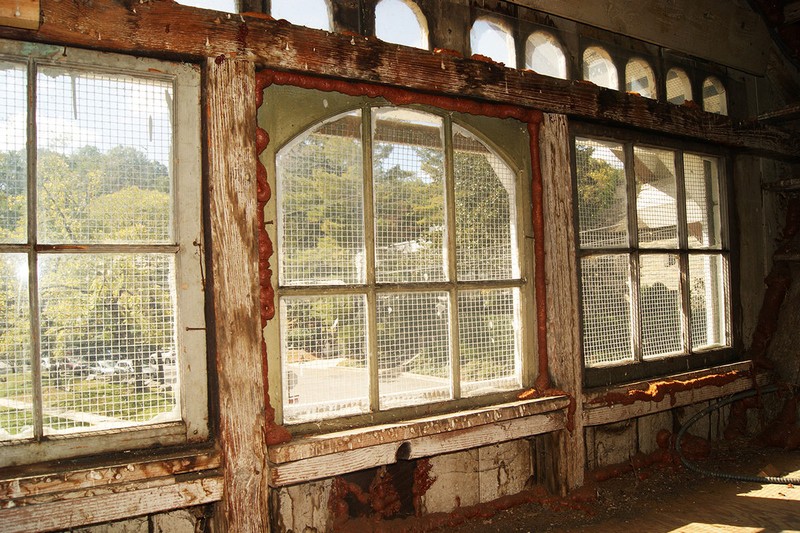Peirce Mill Spy Station and the Art Barn
Introduction
Text-to-speech Audio
Images
Exterior of the former carriage house and spy station, with Hungarian embassy in the background, by Elliot Carter on Atlas Obscura (reproduced under Fair Use)

Looking through the grated windows of the former spy station, by Elliot Carter on Atlas Obscura (reproduced under Fair Use)

Backstory and Context
Text-to-speech Audio
The two-story granite structure, built in the 1820s as a carriage house, stands next to Peirce Mill in what is now Rock Creek Park. The National Park Service acquired the building, which overlooks the embassies of Czechia (known as Czechoslovakia during the Cold War) and Hungary, in 1936. This vantage point made it a prime location for intelligence activities.
During the Cold War, intelligence officers from the FBI went up to the attic of the building and went through a padlocked door and behind a false wall to access the listening station. The area was once a coop for homing pigeons. Within the listening station, agents took pictures through grated windows and monitored bugging equipment. Spy activities continued until midway through 1992.
An alternative art collective, the Art Barn, used the downstairs space of the building for several decades beginning in 1971, all while spies worked upstairs. After the removal of the spy equipment in 1992, the Art Barn, which had long known about the activities of its neighbors, made public the information about the spy station at the Spy Club in downtown Washington. The Art Barn's space is now a small museum area, and the upper floor is in an employees-only part of the building. Public access is determined on a case-by-case basis by individual parl rangers.
Sources
Achenbach, Joel. Getting the Bugs out of the Art Barn, Washington Post. December 1st 1992. Accessed September 21st 2020. https://www.washingtonpost.com/archive/politics/1992/12/01/getting-the-bugs-out-of-the-art-barn/e7e10b40-4e70-4f11-8aaa-129e73e0626d/.
Carter, Elliot. Peirce Mill Spy Station, Atlas Obscura. Accessed September 21st 2020. https://www.atlasobscura.com/places/pierce-mill-spy-station.
DeFerrari, John. Rock Creek Park's Historic Peirce Mill Recalled to Life, Streets of Washington. September 25th 2011. Accessed September 21st 2020. http://www.streetsofwashington.com/2011/09/rock-creek-park-historic-peirce-mill.html.
https://www.atlasobscura.com/places/pierce-mill-spy-station
https://www.atlasobscura.com/places/pierce-mill-spy-station
